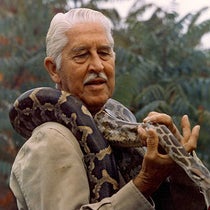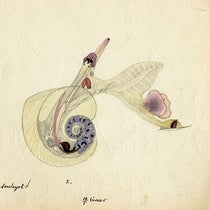Scientist of the Day - Claude Bernard
Claude Bernard, a French physiologist, was born July 12, 1813. Bernard was one of the founders of experimental physiology, setting up a laboratory at the Sorbonne in Paris where he did experiments on living animals to discover the answers to such questions as the nature of digestion, the location of the production of animal heat, and the degree to which the nervous system controls involuntary functions such as the dilation and constriction of veins. He rose to become the most famous life scientist in France in the 19th century, and when he died in 1878, he was given a state funeral, the first scientist ever to be so honored in France. Bernard has a statue outside the College de France (third image) and a portrait photograph in the Wellcome Collection (first image).
Bernard is best remembered today for the discovery of the importance of the milieu intérieur, the internal environment of living things. Bernard observed that in order to be truly free and independent, animals had had to evolve a way to contain within themselves what was previously provided externally: namely, constancy of temperature, acidity/alkalinity, and chemical composition. This allowed the organism to now be independent of its environment and enabled it to survive under widely varying conditions. Much of the physiology of the body was thus aimed at regulating temperature and pH and providing feedback mechanisms to insure the stability of the milieu intérieur. Nowadays we call this feedback mechanism “homeostatis.” It is also the basis for the study of regulatory mechanisms in non-living things that we call cybernetics.
Bernard first conceived of the milieu intérieur in 1857 and first published it in his Introduction à l'étude de la médecine expérimentale (Introduction to the study of experimental medicine, 1865). Although we do not ordinarily collect books in the history of medicine, this work is such a classic, not just in medicine but in experimental biology and the philosophy of science, that we have a copy of Bernard’s book in our History of Science Collection. And a handsome copy it is (fourth image).
Bernard is buried in Père Lachaise Cemetery in Paris, joining 14 others among our Scientists of the Day so far. His monument is the leftmost of the three in the photograph (fifth image).
Dr. William B. Ashworth, Jr., Consultant for the History of Science, Linda Hall Library and Associate Professor, Department of History, University of Missouri-Kansas City. Comments or corrections are welcome; please direct to ashworthw@umkc.edu.









